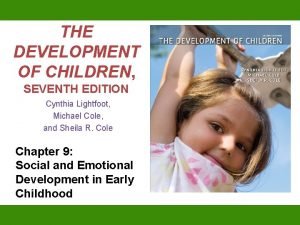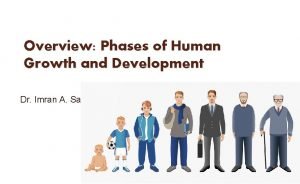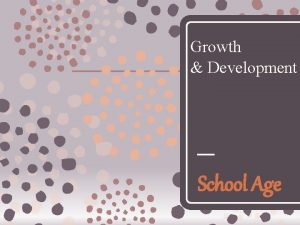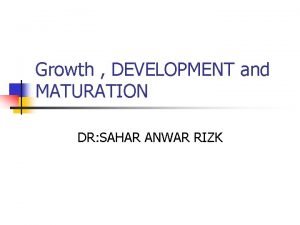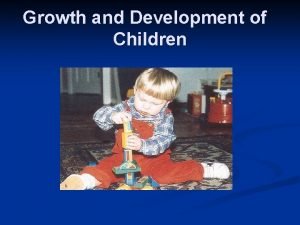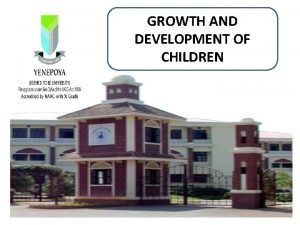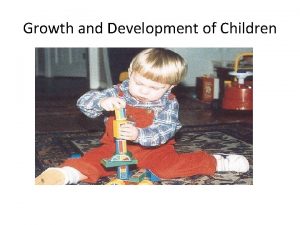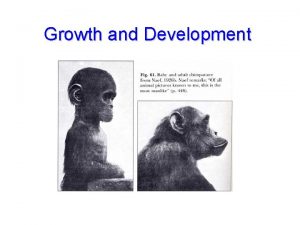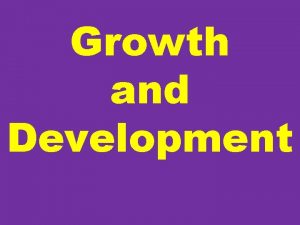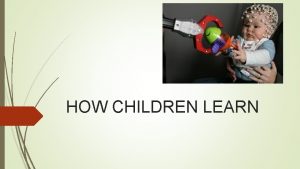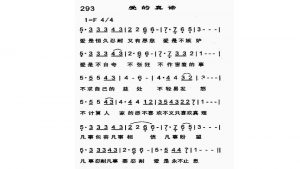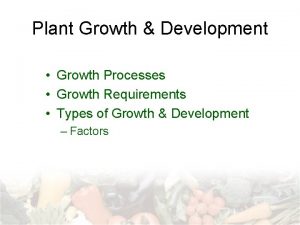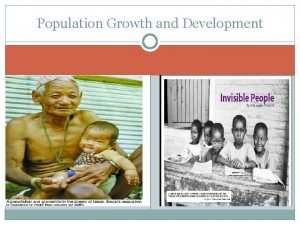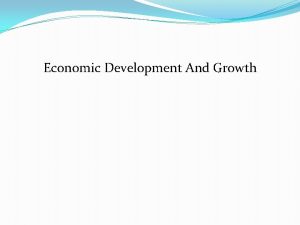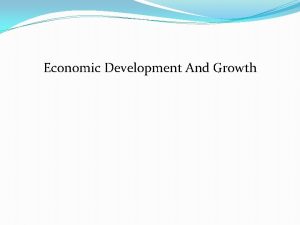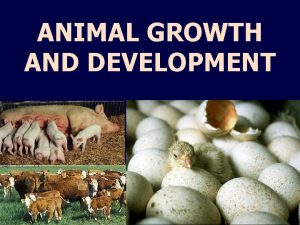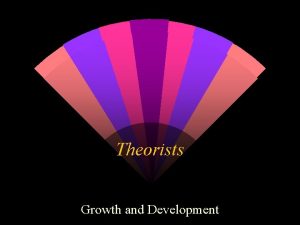Growth and Development of Children 1 Growth and

















- Slides: 17

Growth and Development of Children 1

Growth and Development of Children 2

General Objective: By the end of this lecture, the student will be able to discuss growth and development of children. 3

Specific Objectives: By the end of this lecture, the student will be able to: • • • Identify the importance of growth and development. Define growth and development. Mention the principles of growth and development. List factors affecting growth and development. Mention types of growth and development. Identify the stages of development. 4

Growth refers to an increase in physical size of the whole body or any of its parts. It is simply a quantitative change in the child’s body. It can be measured in Kg, pounds, meters, inches, …. . etc 5

Child Growth (Image: WHO) 6

Changes in bodily proportions with age. 7

Development • Development refers to a progressive increase in skill and capacity of function. • It is a qualitative change in the child’s functioning. • It can be measured through observation. 8

By understanding what to expect during each stage of development , parents can easily capture the teachable moments in everyday life to enhance their child's language development, intellectual growth, social development and motor skills. 9

Maturation • Increase in child’s competence and adaptability. • It is describing the qualitative change in a structure. • The level of maturation depends on child’s heredity. 10

Growth Pattern 11

Growth Patterns The child’s pattern of growth is in a head-totoe direction, or cephalocaudal, and in an inward to outward pattern called proximodistal. 12

Factors affecting growth and development: • Hereditary • Environmental factors Pre-natal environment 1 -Factors related to mothers during pregnancy: - Nutritional deficiencies - Diabetic mother - Exposure to radiation - Infection with German measles - Smoking - Use of drugs 13

2 -Factors related to fetus • • Mal-position in uterus Faulty placental implantation Post-Natal Environment I - External environment: - socio-economic status of the family - child’s nutrition - climate and season - child’s ordinal position in the family - Number of siblings in the family - Family structure (single parent or extended family … ) 14

Internal environment • • • Child’s intelligence Hormonal influences Emotions 15

Types of growth and development Types of growth: - Physical growth (Ht, Wt, head & chest circumference) - Physiological growth (vital signs …) Types of development: - Motor development - Cognitive development - Emotional development - Social development 16

Stages of Growth and Development • Prenatal - Embryonic (conception- 8 w) - Fetal stage (8 -40 or 42 w) • • - Infancy - Neonate - - Birth to end of 1 month Infancy - Middle Childhood • Late Childhood 1 month to end of 1 year - • Early Childhood - Toddler - - School age 6 to 12 years - Adolescent 13 years to approximately 18 years 1 -3 years Preschool - 3 -6 years 17
 Unit 18 assessing children's development support needs p1
Unit 18 assessing children's development support needs p1 The development of children 7th edition
The development of children 7th edition Gordon lightfoot ethnicity
Gordon lightfoot ethnicity Week by week plans for documenting children's development
Week by week plans for documenting children's development Plant growth analysis
Plant growth analysis Primary growth and secondary growth in plants
Primary growth and secondary growth in plants Primary growth and secondary growth in plants
Primary growth and secondary growth in plants Chapter 35 plant structure growth and development
Chapter 35 plant structure growth and development Step growth polymerization vs chain growth
Step growth polymerization vs chain growth Geometric vs exponential growth
Geometric vs exponential growth Neoclassical growth theory vs. endogenous growth theory
Neoclassical growth theory vs. endogenous growth theory Difference between organic and inorganic growth
Difference between organic and inorganic growth Stages of human growth and development pictures
Stages of human growth and development pictures Theories of growth and development
Theories of growth and development Stages of human growth and development pictures
Stages of human growth and development pictures Adulthood social development
Adulthood social development Pretest: growth, development, and sexuality
Pretest: growth, development, and sexuality Development and maturation
Development and maturation


